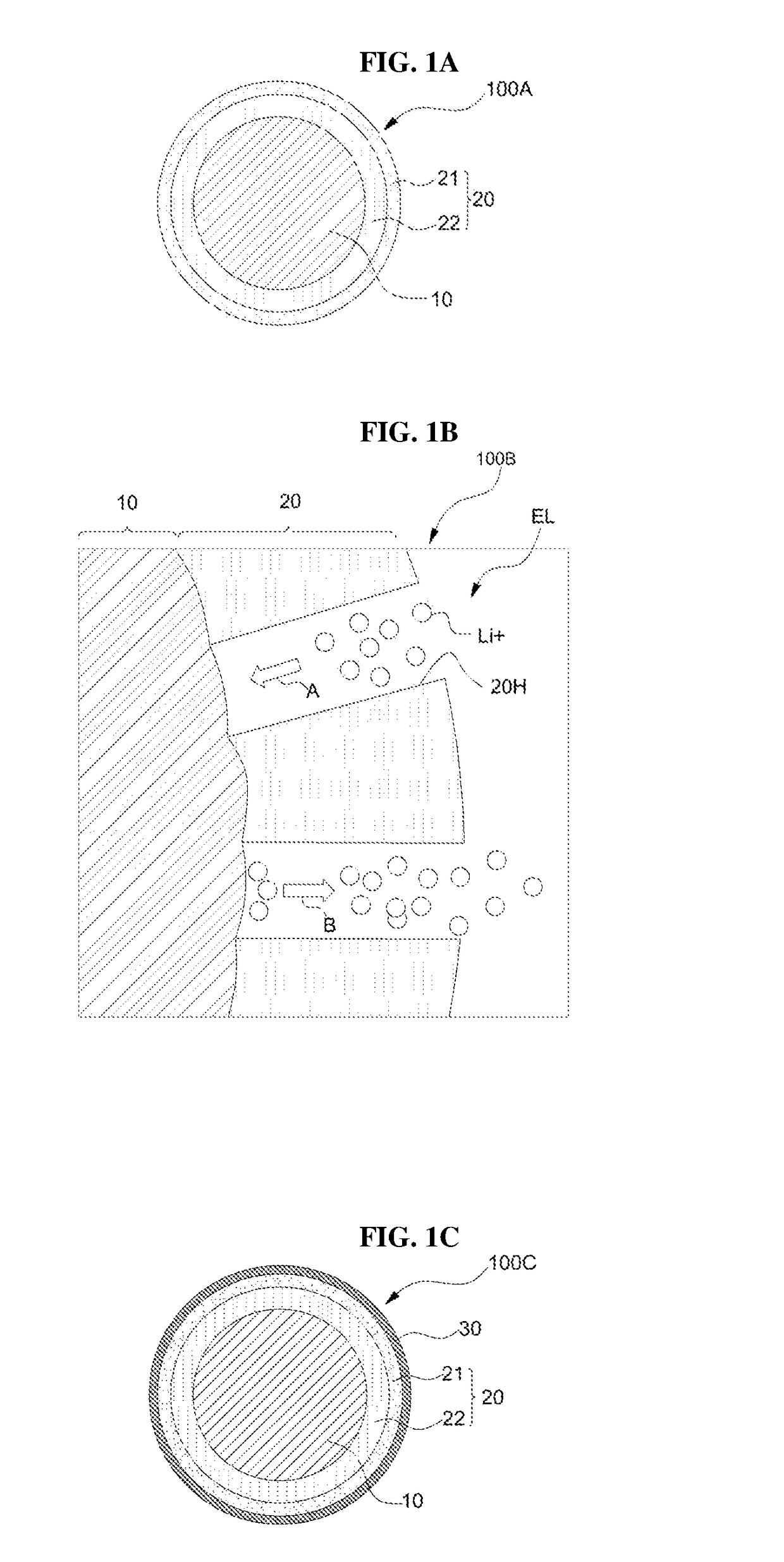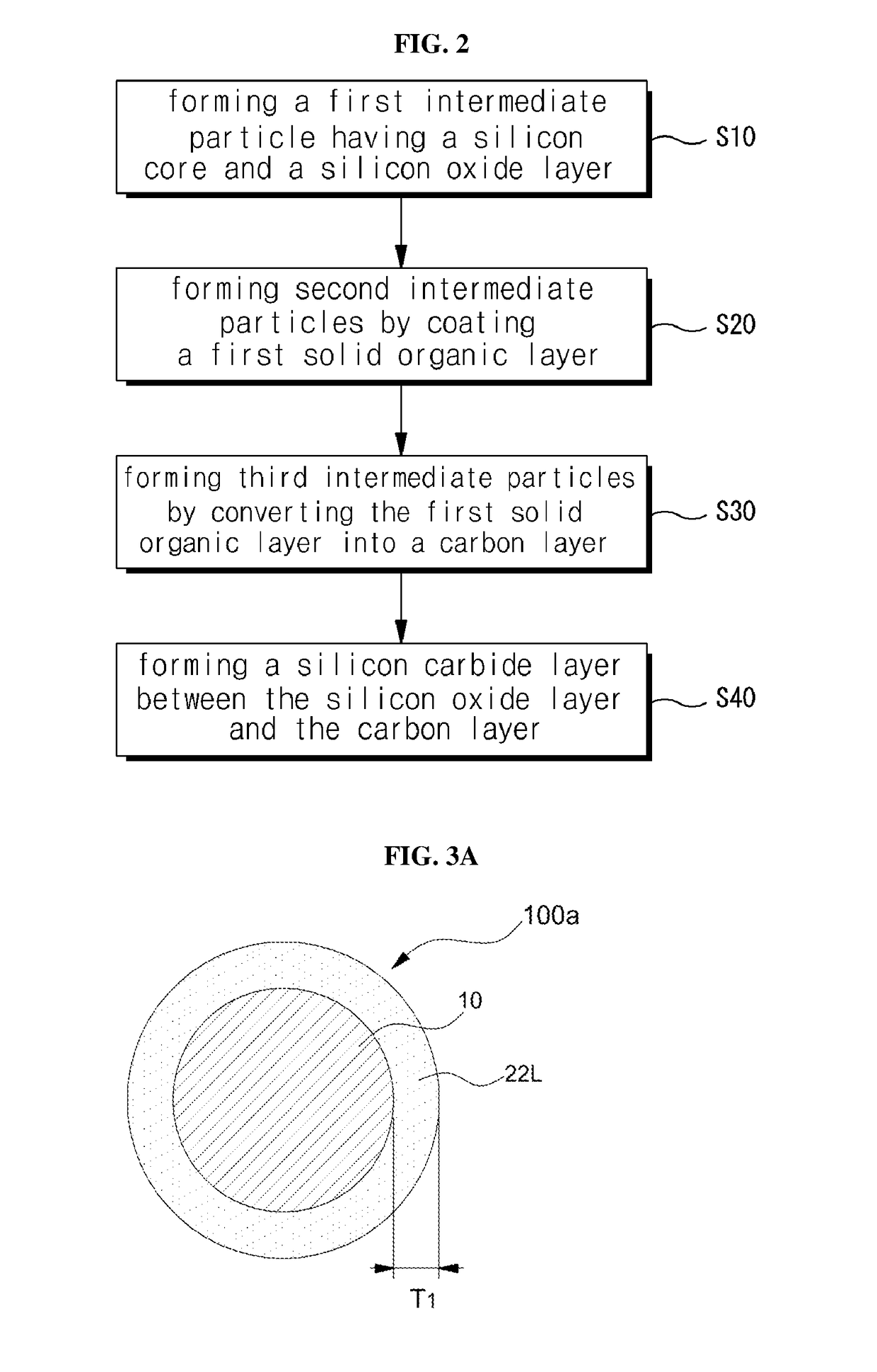Silicon anode active material and preparation method therefor
a technology of active materials and silicon anodes, applied in the field of secondary battery technology, to achieve the effects of high capacity, improved life span, and high efficiency
- Summary
- Abstract
- Description
- Claims
- Application Information
AI Technical Summary
Benefits of technology
Problems solved by technology
Method used
Image
Examples
experimental example 1
[0068]The carbon precursor PVP was dissolved in distilled water at room temperature, and the intermediate particles having the silicon oxide layer formed on the surface of the silicon core were dispersed in the PVP aqueous solution. The radius of the silicon core was 20 nm on average and the thickness of the silicon oxide layer was 2 nm. In order to form a sufficient amount of the solid organic layer, the concentration of PAN was increased to 10 wt %.
[0069]The dispersed aqueous solution was stirred for about 30 minutes to obtain silicon particles, and a solvent on the particles was evaporated to prepare the intermediate particles coated with a solid organic layer as a carbon precursor layer on the surface. Thereafter, the intermediate particles were heat-treated at 800° C. for 1 hour in an Ar gas atmosphere to prepare intermediate particles having a carbon layer formed thereon. Then, the intermediate particles having the carbon layer formed thereon were heat-treated at 1,200° C. for...
experimental example 2
[0070]As in Experimental Example 1, PVP as a carbon precursor was dissolved in distilled water at room temperature, and silicon particles having a silicon oxide layer formed on the surface of the silicon core were dispersed in the PVP aqueous solution. The silicon particles are the same as the silicon particles of Experimental Example 1, the average radius of the silicon core is 20 nm, and the thickness of the silicon oxide layer is about 2 nm.
[0071]After the dispersion aqueous solution was stirred for about 30 minutes, silicon particles were obtained and the solvent on the particle was evaporated to prepare the intermediate particles having a carbon precursor layer coated on the surface thereof as a solid organic layer. Thereafter, the intermediate particles were heat-treated at 1,200° C. for 2 hours in an Ar gas atmosphere to form a silicon carbide layer and a carbon layer sequentially on the silicon oxide layer of the intermediate particles.
[0072]FIG. 6 is a high-resolution trans...
PUM
| Property | Measurement | Unit |
|---|---|---|
| thickness | aaaaa | aaaaa |
| temperature | aaaaa | aaaaa |
| temperature | aaaaa | aaaaa |
Abstract
Description
Claims
Application Information
 Login to View More
Login to View More - R&D
- Intellectual Property
- Life Sciences
- Materials
- Tech Scout
- Unparalleled Data Quality
- Higher Quality Content
- 60% Fewer Hallucinations
Browse by: Latest US Patents, China's latest patents, Technical Efficacy Thesaurus, Application Domain, Technology Topic, Popular Technical Reports.
© 2025 PatSnap. All rights reserved.Legal|Privacy policy|Modern Slavery Act Transparency Statement|Sitemap|About US| Contact US: help@patsnap.com



